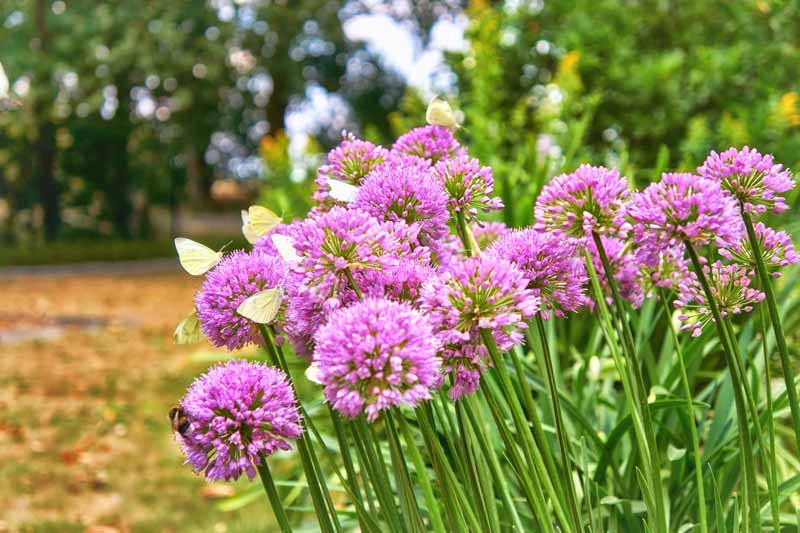Agapanthus Propagation: Tips for Expanding Your Plant Collection
Agapanthus Propagation: Tips for Expanding Your Plant Collection
Blog Article
Releasing the Secret to Effective Agapanthus Cultivation: Idea for a Flourishing Garden
In the realm of horticulture, growing agapanthus efficiently needs a tactical approach that includes numerous aspects of plant care. By comprehending the subtleties of agapanthus growing, one can produce an atmosphere where these plants prosper and flower generously.
Planting Agapanthus: Best Practices
When growing Agapanthus, proper dirt prep work is vital for making sure successful growth and advancement of these stunning flowers. Agapanthus, commonly referred to as Lily of the Nile or African lily, flourishes in well-draining soil with a slightly acidic to neutral pH degree - Agapanthus. Before growing, it is critical to modify hefty clay soils with raw material such as garden compost or peat moss to boost water drainage and supply necessary nutrients for the plants
To plant Agapanthus, pick a location that obtains full sunshine to partial color, as this will certainly advertise healthy development and bountiful flowering. Dig a hole two times the diameter of the plant's root round and position the Agapanthus at the exact same deepness it was previously expanding. Gently backfill the hole with dirt, pushing down firmly to get rid of any type of air pockets around the origins.
Water the freshly grown Agapanthus extensively and proceed to keep the soil evenly damp, particularly throughout the plant's energetic expanding period. Agapanthus. Applying a well balanced fertilizer once a month can even more sustain the plant's growth and blooming. By following these ideal techniques for planting Agapanthus, you can create a stunning display screen of these fascinating flowers in your yard
Perfect Soil Issues for Agapanthus
For optimum development and flowering success of Agapanthus plants, ensuring the dirt problems are perfect is essential. Agapanthus prefers soil that is abundant in nutrients, so integrating a well balanced plant food during the expanding season can promote healthy development and vibrant blossoms.

Watering and Fertilizing Tips
To make certain healthy and balanced growth and vibrant blossoms, appropriate watering and feeding methods are vital for effective Agapanthus growing. Agapanthus plants benefit from normal watering, particularly during the growing season.
When it pertains to feeding Agapanthus, a well balanced fertilizer with equal parts nitrogen, phosphorus, and potassium can be applied in the springtime to promote healthy and balanced growth and blooming. Slow-release fertilizers are optimal for providing nutrients slowly over an extensive duration. Prevent over-fertilizing, as this can result in excessive vegetation growth at the expense of flowers.
Furthermore, incorporating organic issue like compost right into the dirt can boost nutrient levels and enhance soil framework, aiding in the total health of the Agapanthus plants. By complying with these watering and fertilizing pointers, garden enthusiasts can ensure their Agapanthus plants flourish and create sensational screens of blossoms.
Pruning and Deadheading Techniques
Appropriate trimming and deadheading techniques play an essential function in preserving the health and visual appeals of Agapanthus plants, complementing the vital practices of watering and feeding for effective farming. Pruning Agapanthus involves getting rid of invested flower heads, yellowing or dead fallen leaves, and total shaping of the plant to promote better development. Deadheading, the process of eliminating faded blossoms, not just enhances the plant's appearance however also motivates more blooming.
When deadheading Agapanthus, it is advisable to clip off the flower stem at the base utilizing sharp, clean shears. This discover this process reroutes the plant's power from seed production back into origin and foliage growth, promoting a much healthier and a lot more robust plant. Normal deadheading can prolong the flowering period of Agapanthus and stop self-seeding, which can cause overcrowding.
In terms of trimming, Agapanthus generally advantages from a light trim after blossoming to clean the plant and encourage fresh development. Cutting down the invested blossom stems and getting rid of any kind of damaged or dead vegetation aids keep the plant's vigor and overall look. However, it is necessary to prevent cutting into the crown of the plant, as this can compromise its health.

Protecting Agapanthus From Vermins and Diseases
Executing efficient parasite and condition pop over to this site administration approaches is vital to protecting the health and wellness and vitality of Agapanthus plants in farming. Agapanthus are usually durable plants, yet they can still succumb numerous insects and diseases otherwise correctly taken care of. One typical bug that impacts Agapanthus is the Agapanthus borer, a caterpillar that tunnels into the plant, creating damage to the leaves and flowers. To avoid invasions, normal evaluation of the plants is necessary. If borers are detected, they can be by hand gotten rid of, or insecticidal soap can be utilized as a control procedure.
In addition to bugs, Agapanthus are at risk to conditions such as origin rot and fungal fallen leave places. By staying vigilant and resolving insect and disease concerns quickly, garden enthusiasts can help their Agapanthus flourish and thrive.

Conclusion
Finally, successful growing of agapanthus needs proper planting methods, excellent dirt conditions, ample watering and fertilizing, regular trimming and deadheading, and defense from parasites and conditions. By complying with these pointers and tricks, gardeners can ensure a growing yard full of stunning agapanthus blossoms. Agapanthus. Remember to keep constant care and interest to detail to promote the health and durability of these magnificent plants
When growing Agapanthus, appropriate dirt prep work is important for ensuring effective growth and growth of these lovely flowers.Water the freshly grown Agapanthus thoroughly and continue to keep the dirt uniformly moist, especially during the plant's active growing season.For optimum growth and flowering success of Agapanthus plants, guaranteeing the soil problems are ideal is important. When transplanting or growing Agapanthus, guarantee the soil is well-prepared to provide the necessary foundation for the plants to establish themselves successfully. One usual pest that influences Agapanthus is the these details Agapanthus borer, a caterpillar that tunnels into the plant, creating damages to the blossoms and leaves.
Report this page